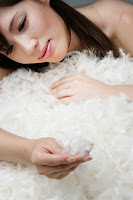Symptomatic therapy
Normal saline lavage is used to remove secretions and promote nasal mucosal healing. Oral and topical decongestants can reduce mucosa congestion and improve drainage. Mucolytic is used to thin mucus secretions, reduce mucus stasis, and promote clearing. Antihistamine can decrease mucus production and diminish nasal discharge. Intranasal corticosteroid is also used to reduce inflammation and improve associated symptoms.
Antibiotic
Antibiotics are a common prescription for acute rhinosinusitis. However, only 0.2%-2% of viral upper respiratory tract infections are complicated by bacterial rhinosinusitis and around 40% of acute bacterial infections resolve spontaneously. That means 85%-98% of patients with acute rhinosinusitis are needlessly prescribed an antibiotic
Early treatment of rhinosinusitis should be focused on control inflammation to allow sinus drainage and prevent bacterial infection. Antibiotic should be reserved for persistent moderate to severe disease and complications.
Treatment of Chronic Sinusitis
A careful history taking and past medical records review are important. A thorough physical examination including fiberoptic nasoendosocpy is necessary to delineate the patient's anatomy. CT scan of paranasal sinus will help document the extent of disease and clarify any other anatomic abnormalities.
An optimal medical treatment consists of antibiotic, nasal saline irrigation, intranasal steroid spray should be given. The patient should then be re-evaluated and restaged in 1 month. If the patent is not responsive to the treatment, surgical intervention should be considered.
It is not intended as medical advice to any specific person. If you have any need for personal advice or have any questions regarding your health, please consult your ENT doctor for diagnosis and treatment.





